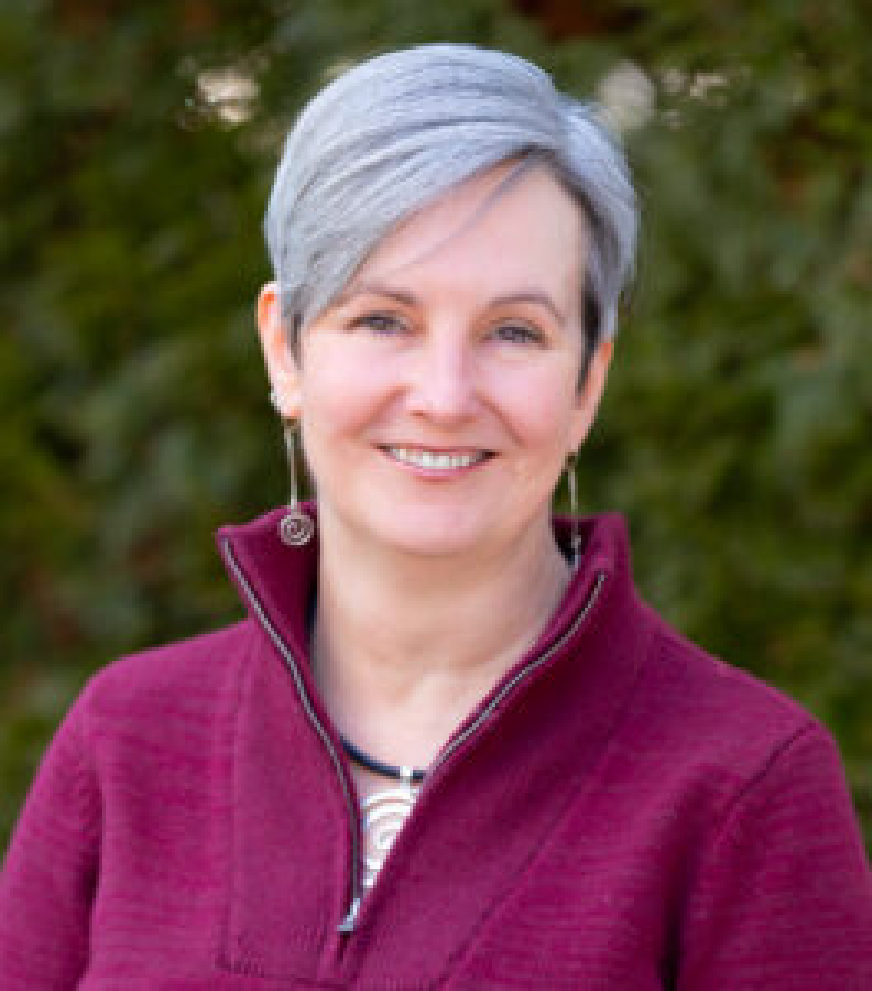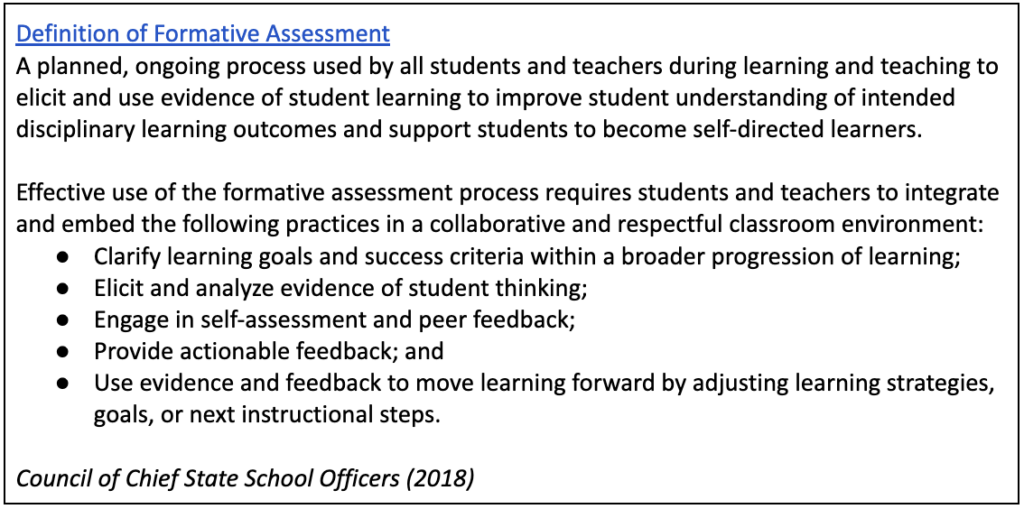
A Formative Assessment Journey
An Adventure, in Which an Expert Learns New Ropes
Helping teachers learn how to use formative assessment to improve student learning has been my focus for the last 20 years. Now, as I transition to work at the Center for Assessment, I find myself back in a new and sometimes uncomfortable role as a learner. It’s as exciting as it is unsettling, and it’s led me to reflect on ways I want to push myself into different spaces in this new chapter of my life.
Much of this reflecting has been happening when I am out on a bike ride, with just my thoughts for company. Recently, on a long straight stretch of road, it hit me: I’ve finally become comfortable in my role as an “expert.” Which is ironic, since with this new job, and a brand new to-do list, I realize there is so much I don’t know—I mean, don’t know yet. And I’m both nervous and excited to learn.
I’ve got a growing list of things I want to focus on at the Center in the next couple years: learning how to take ideas about formative assessment and teacher professional learning to scale in schools and districts, helping districts sustain transformation through leadership change, understanding how approaches to formative assessment might change in competency-based learning systems, and using curriculum design to support formative assessment practices. I’m adding to this list every day.
Always More to Learn
But wait, you might say: Haven’t you been doing that stuff for a while? Aren’t you the expert?
Well, yes and no. I’ve certainly worked on many formative assessment projects, including several that focused on describing the knowledge and skills that teachers need to engage meaningfully with formative assessment (see box for a definition). One project resulted in the development of standards for classroom assessment, and I later produced a learning module to help teachers and school leaders apply these standards to their local contexts.
More recently, I have been co-authoring a National Academy of Education chapter with Margaret Heritage on classroom assessment literacy and the kinds of professional learning opportunities that would enable teachers to develop those skills. We articulate a wide variety of ways that teachers can deepen their assessment knowledge and practice, but we make it very clear that teacher learning does not happen without tangible backing from school and district leadership and careful attention to how policies can promote or hinder that work.
Across projects, I have utilized a variety of approaches to support teacher learning. One broad approach has been through the use of school-based professional learning communities (How Structure and Focus Support Teacher Learning; Teacher Professional Development Focused on Formative Assessment: Changing Teachers, Changing Schools; and Tight but Loose: Scaling up Professional Development in Diverse Contexts). These projects taught me the value of a clear framework for formative assessment that can inform educators’ discussions about what formative practices could look like in their particular contexts. These projects also taught me the importance of providing learning materials that introduce teachers to the topic, creating routines for supporting teacher learning, and building in sufficient time for change to take place.
How Formative Assessment Takes Hold in District Practice
Another component of my work has been using classroom peer observations to provide formative feedback. We’ve done this with a set of rubrics that articulate 10 dimensions of formative assessment practice, each with a continuum of quality. Through this work I saw firsthand the value of teachers opening their classrooms to their peers (via video recordings). I appreciated seeing how much they could learn, not only from receiving peer feedback, but from providing it.
Much of my work has been very low-tech, but one project was a technology-driven approach to reinforcing previous teacher learning. This tool, developed with a team of colleagues from the Educational Testing Service, where I worked for the past 25 years, recommends targeted formative assessment strategies while a teacher is lesson planning in a Google document. Although this tool might not provide sufficient support for a novice teacher, it can serve as a useful reminder for teachers who have already engaged in some form of professional learning about formative assessment. This project reminded me of the critical importance of lesson planning and made me think hard about when teachers would get the most value from targeted, formative-assessment nudges.
While I have approached teacher learning in a variety of ways, my focus has been primarily on mechanisms and tools that teachers can use to help develop and deepen their understanding and practice of formative assessment. But I have not done much work on how the use of such mechanisms and tools gets embedded into the structures of a school or district.
I’ve written about what school and district leaders need to know and be able to do, and the enabling conditions they need to create, for that teacher learning to take place. I’ve gathered some anecdotal examples of how school leaders creatively found time for school-based professional learning communities, and by contrast some examples where the leadership climate or district decisions were not conducive for teacher learning.
The Key Role of Peers in Learning
Now I have the opportunity to learn alongside school and district leaders who are trying to make these ideas a reality. Part of my role at the Center for Assessment will be to provide technical assistance on formative assessment and assessment literacy. I am looking forward to applying what I’ve learned to new contexts, observing how schools and districts are developing teacher learning in service of student learning, and finding ways to support them in that work.
As I write about these new areas to explore, I realize that this nervousness is what students must feel every day. It’s probably what some teachers were feeling when they sat in a workshop with me and developed action plans for how they would change their assessment practices.
Reckoning with all my nervousness makes me reflect on how formative assessment emphasizes the role of peers to support learning – student peers helping each other, and teacher peers collaborating on innovative approaches to their pedagogy.
In turn, I deeply appreciate the peers with whom and from whom I’ve had the opportunity to learn, for the teachers and leaders who have de-privatized their classrooms and schools, who have been willing to talk about their practice, been vulnerable and eager to learn, and for my new peers at the Center. May we all continue to learn together.

